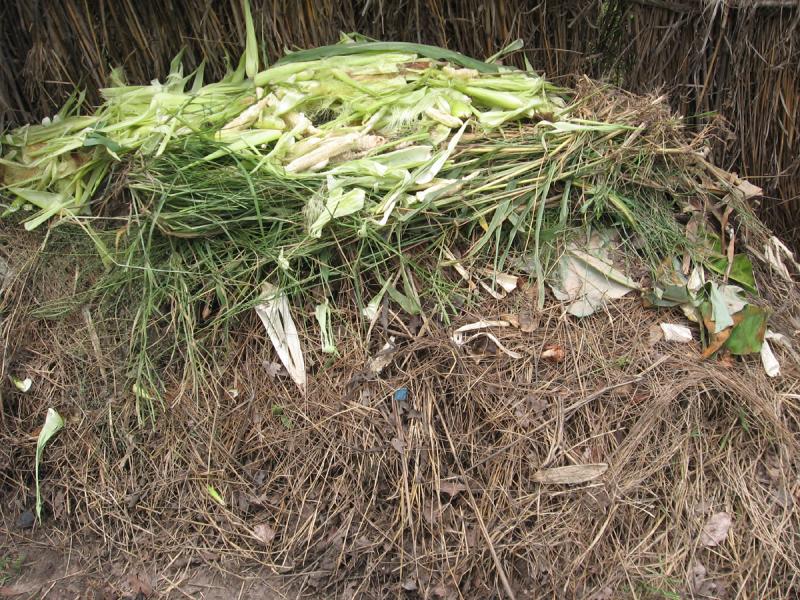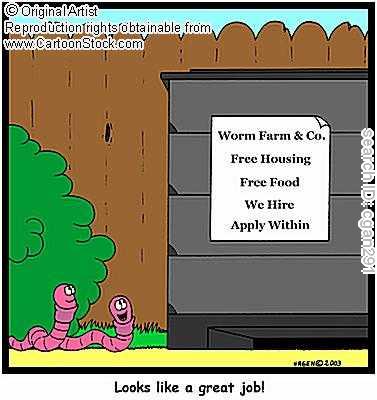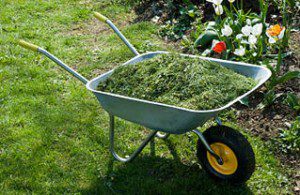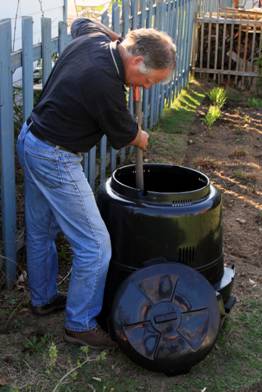ALRIGHT, you’ve talked me into it now what can I put in this contraption?
I’m glad you’re considering composting. Not only is it a lot more gratifying than you might thing, its also very good for the environment. Every time you take the effort to take what usually goes in to the garbage and walk it to your compost pile, you reduce the waste to the landfills, reduces the number of trips the garbage trucks have to make to the landfill AND most importantly, burn off some calories going back and forth to the pile.
What’s In it For me, I mean, My Plants?
The rich organic matter that comes from your pile does wonders for your garden and any new transplant yo might want to put into your existent flowerbeds. Compost not only breaks up nasty clay soils but it also:
—releases nutrients slowly so they don’t leach away like synthetic fertilizers (miracle-gro)
—Reduces Soil Compaction
—Enhances moisture and nutrient retention (read as this-water less!)
—attracts earthworms (read as this-earthworm castings are one of natures BEST fertilizers)
I’m ready to start rotting!
The last thing you want to do is treat your compost pile like a trash can!
Here is a quick list of SAFE Kitchen Scraps to throw in your pile.
Kitchen scraps, such as fruit and vegetable peels and trimmings, crushed eggshells, tea bags, and coffee grounds and filters, some paper towels.
NO MEAT, NO PET POOP!
What About From My Yard?
Use Caution! Just use this rule of thumb, if you didn’t want it in your garden or flower bed in the first place, don’t put it in your compost pile. Weeds, sticks, and undesirable plants have to place in the compost pile. There is always a slight chance that those weed roots won’t break down all the way and just end up somewhere else in the yard. Also, sticks branches and limbs don’t break down all that quick so it will slow the rest of the composting down by causing “cold” spots in the pile.
Also, take some precaution not to add any diseased plant material to your pile either. Kind of self explanatory, but hey, its worth telling you about (I like to keep my conscience clean).
Leafy plant trimming such as cut back perennials in the fall, deadheaded annuals and any old annuals that might be getting swapped out from season to season are strongly encouraged to be added to the pile. Pine needles, small fallen leaves off of tress and grass clippings are also encouraged to be added. Just remember, the smaller the object put into the pile the quicker it will break down.
Whats Next?
In the last segment of our compost adventure, I’m going to explain to you the difference between fast and slow composting. Take the plunge and start adding stuff now! You really can’t screw up at this juncture!









